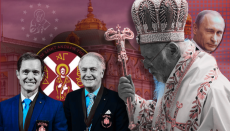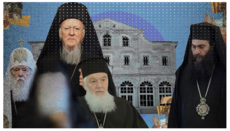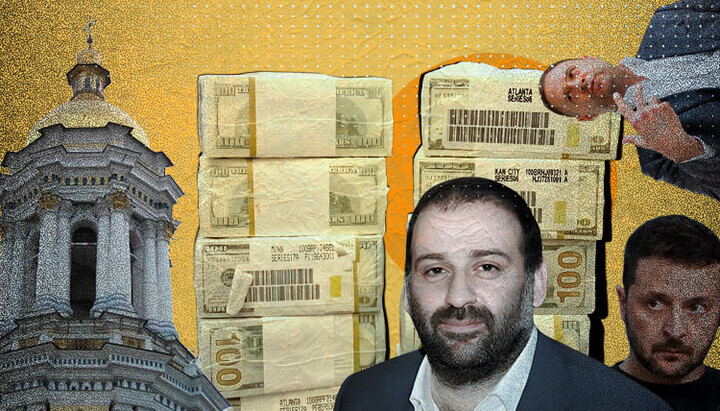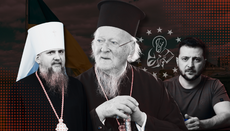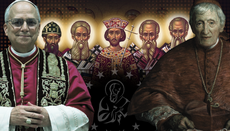Eastern Catholicism: A Trojan Horse
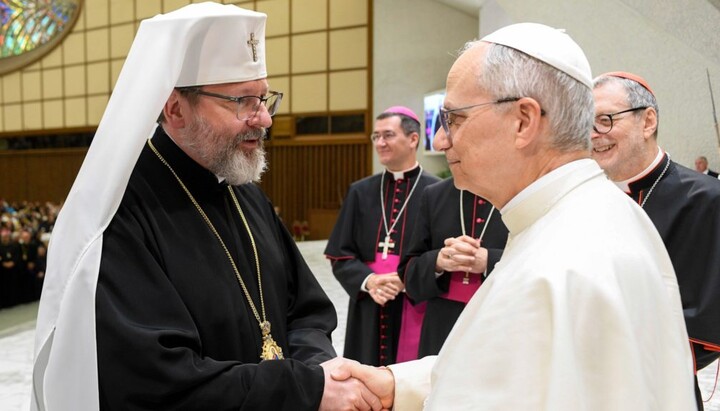
Uniatism is not a bridge to Christian unity but a Trojan horse that erodes Orthodoxy’s integrity.
Uniatism, the practice of Eastern Christian communities submitting to Rome while retaining their liturgical traditions, is often hailed as a bridge to Christian unity. Yet, from an Orthodox perspective, it is a Trojan horse, undermining the integrity of Orthodoxy while entrenching Roman Catholic dominance. This article examines five critical issues—Eastern Catholicism’s dubious origins, the papacy’s destabilizing influence, overlapping jurisdictions, spiritual incompatibilities, and theological differences—to reveal why Uniatism threatens the soul of the Orthodox faith.
1. Eastern Catholicism’s Dubious Origins
The historical roots of Eastern Catholicism, or Uniatism, are steeped in coercion and opportunism, not genuine unity. This is exemplified by the Union of Brest (1596), where Orthodox Christians in Polish-Lithuanian territories faced centuries of persecution by Polish — later Habsburg — authorities, compelling them to submit to Rome to preserve their communities.
Similarly, in Antioch, French diplomats bribed Arab Orthodox leaders, leading to the formation of a pro-Roman faction. In 1724, this pro-Roman faction contested the results of the patriarchal election, eventually going into schism from the Antiochian Church and forming the Melkite Greek Catholic Church.
Likewise, the Chaldean Catholic Church emerged in 1553 when Franciscans exploited a schism in the Nestorian Church, luring a usurper, Yohannan Sulaqa, to Rome for consecration as patriarch. These origins reveal a pattern of political manipulation, not spiritual convergence. Uniatism was born not of shared faith but of power plays, forcing Orthodox communities into a compromised allegiance to Rome while superficially retaining their rites.
2. “Breathing with Both Lungs”?
The Melkite experience starkly illustrates the challenges Roman Catholicism faces in truly "breathing with both lungs," as Pope John Paul II famously described the aspiration for unity between Western and Eastern Christian traditions. The historical tensions, exemplified by the Melkite Greek Catholic Church’s struggles with Rome, reveal a persistent imbalance that undermines the ideal of harmonious coexistence.
At the First Vatican Council (1869–1870), Melkite Patriarch Gregory II Youssef vehemently opposed the doctrine of papal infallibility, arguing it would "completely destroy the constitution of the entire Greek church" by overriding the traditional rights of Eastern patriarchal sees. His stance reflected a deep commitment to preserving the Eastern Church’s autonomy, which he believed was rooted in ancient customs where the pope exercised supreme authority only in exceptional cases.
Faced with defeat, Gregory and his allies chose to leave Rome before the final vote, avoiding a direct clash between their consciences and papal authority. When compelled to sign the Council’s documents, Gregory added a qualifying clause affirming papal infallibility “except the rights and privileges of Eastern patriarchs,” a move that provoked Pope Pius IX to physically reprimand him, highlighting Rome’s intolerance for dissent.
This episode set a precedent for the fraught relationship between Rome and its Eastern Catholic counterparts. Centuries later, the Melkite-led Zoghby Initiative of 1995 further exposed Rome’s inability to fully embrace Eastern traditions. Archbishop Elias Zoghby’s bold Declaration of Faith, endorsed by the Melkite synod, affirmed belief in all Eastern Orthodox teachings while recognizing the pope’s primacy only within the limits acknowledged by the Eastern Fathers before the East-West schism. This was a direct challenge to “uniatism,” the process by which Eastern Catholic churches were often “annexed” to Rome, functioning as mere extensions of the Latin Church rather than equal partners. Zoghby’s statement provoked a sharp rebuke from Cardinal Joseph Ratzinger, underscoring Rome’s resistance to any framework that might dilute its centralized authority.
Although the controversy eventually subsided, the Melkites never retracted their Declaration, signaling a persistent unease with Rome’s dominance. As recently as 2024, Melkite Patriarch Youssef I Absi acknowledged the failure of the Melkite Church’s aspiration to serve as a bridge between East and West, admitting they had “planted their feet on the Western side” from the outset. This admission underscores the reality that Rome’s vision of unity often demands conformity to Latin norms, sidelining Eastern traditions.
3. Overlapping Jurisdictions
Uniatism institutionalizes overlapping ecclesiastical jurisdictions, a practice that violates the ancient canons, which hold that there may only be one bishop per city. In Orthodoxy, such overlaps are temporary, often arising from pastoral needs in the diaspora, and efforts like the 1994 Ligonier Meeting aim to unify jurisdictions, such as creating a single American Orthodox Church.
In contrast, Roman Catholicism’s 24 sui iuris churches—Latin, Melkite, Chaldean, and others—coexist permanently in the same regions, creating canonical chaos. For example, in the Middle East, multiple Catholic patriarchs claim authority over the same territories, sowing confusion and division.
This structure undermines the orthodox principle of territorial unity, forcing Eastern Catholics to navigate a fragmented ecclesial landscape under Rome’s centralized control, which Uniatism perpetuates as a permanent reality rather than a resolvable issue (as in the Orthodox Church).
4. Spiritual Differences
Orthodox and Roman Catholic spiritual practices are fundamentally incompatible, particularly in their approaches to sacred art and prayer. Orthodox iconography is a theological act, rooted in the Incarnation as a historical event, depicting Christ and the saints in a stylized manner to emphasize their transfigured reality. Eastern Catholic churches, under Uniatism, equivocate between the two traditions. Worse, they often adopt hybrid art forms, incorporating Western-style statues that prioritize naturalism over theology, destroying the holistic experience of the Eastern tradition.
Similarly, the Jesus Prayer—“Lord Jesus Christ, have mercy on me”—seeks noetic unity, focusing the mind solely on Christ’s presence, as taught in the Philokalia. St. Hesychios the Priest warns against imagination in prayer, citing its vulnerability to demonic prelest. The Rosary, however, encourages imagining scenes from Christ’s life while reciting Hail Marys, fostering mental division.
Uniatism asks Eastern Christians to abandon these profound spiritual practices for Western alternatives, compromising their noetic depth.
5. Theological Differences
The Orthodox doctrine of theosis—divinization through participation in God’s uncreated energies—is central to its theology but clashes with the Roman Catholic Beatific Vision, which emphasizes beholding God’s essence.
The so-called Beatific Vision emphasizes a static, intellectual contemplation of God's essence, reducing the divine-human relationship to a visual or cognitive experience. Orthodoxy views union with God—theosis—as a dynamic, transformative participation in His energies, not a mere beholding of His essence, which remains inaccessible. The Roman doctrine risks detaching salvation from ongoing spiritual growth and overemphasizes individual fulfillment over communal participation in divine life. This divergence reflects deeper theological differences, particularly Rome’s reliance on scholastic categories versus Orthodoxy’s mystical, apophatic tradition.
Many Catholics today argue that theosis is equally present in the Western tradition. Unfortunately, this isn’t true. The Jesuit Robert Bellarmine’s condemnation of Achille Gagliardi for teaching “deificazione,” as noted in The Jesuits by Markus Friedrich, underscores Rome’s historical unease with theosis. While Eastern Catholics may retain the language of theosis, their submission to Rome aligns them with a theological framework that prioritizes the Beatific Vision, creating dissonance.
Conclusion
Uniatism is not a bridge to Christian unity but a Trojan horse that erodes Orthodoxy’s integrity. Its origins in coercion and bribery reveal a lack of spiritual authenticity. The papacy, far from unifying, fosters a brittle faith dependent on human authority. Overlapping jurisdictions create canonical chaos, contradicting Orthodoxy’s commitment to ecclesial order. Spiritual practices like icons and the Jesus Prayer, rooted in the Incarnation and noetic unity, are diluted by Western statues and the Rosary’s imaginative focus. Theologically, theosis clashes with the Beatific Vision, exposing irreconcilable differences. Uniatism asks Eastern Christians to sacrifice their heritage for a superficial unity under Rome’s control. Orthodoxy, preserving the Early Church’s ecclesiology and spirituality, offers the true path to the fullness of the faith, untainted by the compromises of Uniatism.
